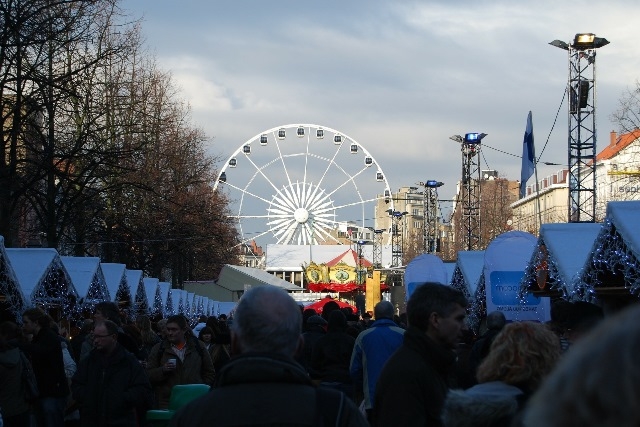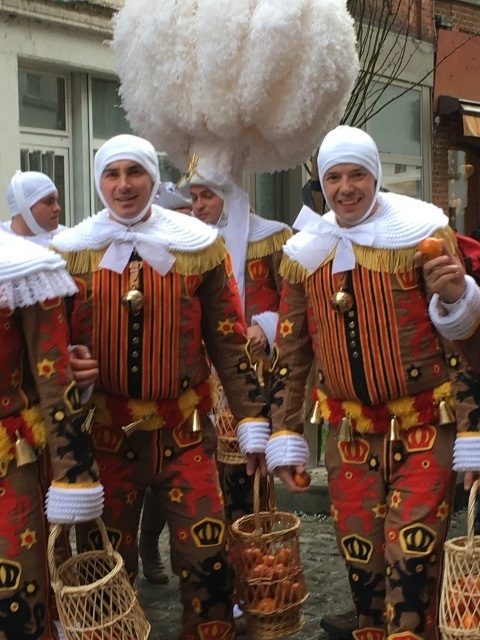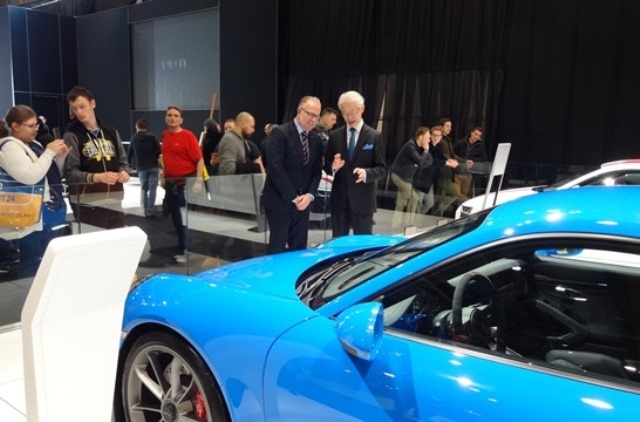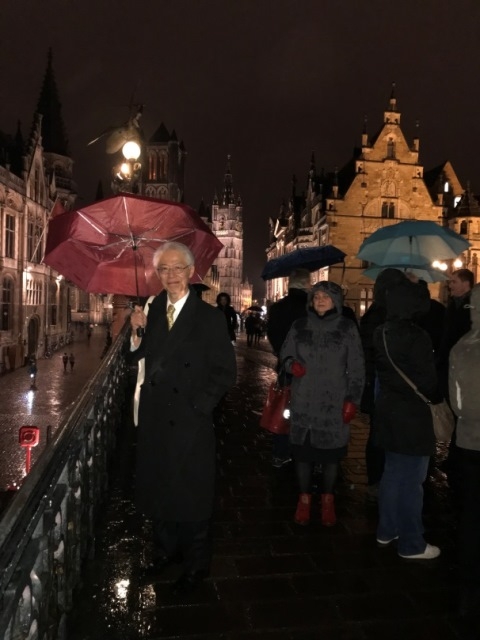Winter in Belgium (No.6)
It is the first time that I am spending the winter in Belgium. Except for the Ardennes plateau in the east and southeast, Belgium is located close to the sea, and dramatic drops in temperature or heavy snowfalls are rare during winter. In that sense, one can say it is relatively easy to spend the winter here.
However, there are some problems as well. First of all, there is the sensible temperature. Because the humidity level is relatively high even during winter, the temperature felt by one’s body is lower than the temperature displayed on the thermometer. Nowadays, it is very practical that you can immediately look up the weather and temperature of the day on the internet, but one needs to be careful of the fact that in Belgium there are many days when the sensible temperature is lower than the actual temperature.
Secondly, the hours of sunshine. This is also connected with the humidity during winter. In Belgium, many days are overcast with sometimes rain or snow, limiting the amount of sunlight during winter.
This winter, the hours of sunshine became a topic of daily conversation because they were especially short. According to an announcement by the Royal Meteorological Institute in Uccle, located in the southwest of Brussels, the total sunshine time in December last year was 10 hours 29 minutes. This is less than a quarter of a December month of an average year, and the shortest in the history of the institute’s recording since 1981. Also, although not as short as last December, the total of sunshine hours in January of this year was also a mere 26 hours 59 minutes, less than half of the average.
In Japan, it seems that the talk of the town is this winter’s unusual cold and snow, while here in Belgium it is the remarkable short sunlight hours, and there are the discussions that this might be a result of global climate change.
In this way, spending the winter in Belgium is relatively easy in terms of temperature and snow, but it is characterized by a lot of chilly days and limited sunshine hours. To cope with this, the Belgians have various traditions and clever ways to spend the winter enjoyably. Of course, many of these they have in common with the surrounding countries. This time, I would like to introduce a total of four things that can be thought of as ingenuous ways to spend the winter in Belgium, two traditional events and two modern events.
 One of those, it goes without saying, is Christmas. When Christmas time draws near, Christmas markets (marchés de Noël) pop up in every city. It seems that originally these markets were meant for the buying and selling of Christmas decorations, and even today Christmas markets in many countries are still like this. The Christmas markets in the regions of Alsace in France and Bavaria in Germany are especially famous, where one cannot fail to notice the many stalls selling different kinds of Christmas decorations. One of those, it goes without saying, is Christmas. When Christmas time draws near, Christmas markets (marchés de Noël) pop up in every city. It seems that originally these markets were meant for the buying and selling of Christmas decorations, and even today Christmas markets in many countries are still like this. The Christmas markets in the regions of Alsace in France and Bavaria in Germany are especially famous, where one cannot fail to notice the many stalls selling different kinds of Christmas decorations.
In contrast, Christmas markets in Belgium, as one would perhaps expect in this country, have a large number of food stalls compared to stalls selling decorative items. After all, Christmas in Belgium cannot begin without beer. Also, is it not perfect to have warm wine (vin chaud) in the evening, when the cold really sets in? When you have drinks, you also need snacks. For Belgians it is obvious to have fries and waffle shops. This winter, I had the opportunity to visit two Christmas markets in addition to the one in the center of Brussels, namely those of Liège and Durbuy. I was impressed by the sight of Belgian people spending time at the Christmas markets until late at night, engaging in lively conversations with friends while defying the cold with their drinks and snacks in hand.
 Carnival, held in early February, is another tradition and enjoyable way to spend the chilly winter with its short sunlight hours. During the carnival period, Belgian schools are closed and many Belgians take a vacation. During this period, much like during the Christmas period, the number of people and cars in the center of Brussels decreases. Carnival, held in early February, is another tradition and enjoyable way to spend the chilly winter with its short sunlight hours. During the carnival period, Belgian schools are closed and many Belgians take a vacation. During this period, much like during the Christmas period, the number of people and cars in the center of Brussels decreases.
Especially the carnival of Binche, a city located in the southern part of Belgium, is famous, and it was listed in 2003 by UNESCO as intangible cultural heritage. Tourists from all over the world gather to catch a glimpse of the gorgeously dressed “Gilles”, wearing their ostrich feather hats on Mardi Gras. Besides this, there are a considerable number of traditional carnivals organized by residents of each region in Belgium, for example, the Carnival of Aalst in the west of Brussels. These seem to have some common elements, such as participants throwing fruits or vegetables to one another, and a parade of men dressed up as women. It seems that the carnival also has the meaning of inviting spring and praying for an abundant harvest during the new season, which may be linked to these elements.
 Although quite different from traditional events linked to religion like Christmas and carnival, the Brussels Motor Show, held every year in mid-January, is another clever way to spend the cold and dark winter enjoyably. There, the automobile manufacturers announce their new models of the year and showcase their ideas for the cars of the future. Motor Shows are not held in Brussels alone, but all over the world. However, the Brussels Motor Show has its own distinctive features. Although quite different from traditional events linked to religion like Christmas and carnival, the Brussels Motor Show, held every year in mid-January, is another clever way to spend the cold and dark winter enjoyably. There, the automobile manufacturers announce their new models of the year and showcase their ideas for the cars of the future. Motor Shows are not held in Brussels alone, but all over the world. However, the Brussels Motor Show has its own distinctive features.
To begin with, it has a long history. This year marked the 96th edition. Much time has passed since it was first held, and in that sense it can already be called a tradition. Also, there is the timing of the show. It is the first of the motor shows of the year in the world. Organizing the event every year when the atmosphere of New Year still lingers on, gives this event a strong wintery feeling. Moreover, it is popular. At the Brussels motor show, many exhibition places have sales corners. In other words, visitors can purchase a car there if they like it. Even so, it seems to be particularly popular with families; bringing not only one’s partner along, but the children as well, enjoying looking at cars and spending plenty of time deciding which kind of car to buy. All while it is the cold and dark winter season. Needless to say, there are numerous food and drink booths at the venue, including those for children, so that everyone can spend a nice time. One can surely think of the Brussels Motor Show as one of the winter events.
 Finally, although it was only the fourth time, one can say that the Ghent Light Festival, held once every three years, this year from the end of January to the beginning of February, is closely linked with winter. In the first place, the winter season with its long nights had to be chosen to display light arts in the center of Ghent, Belgium's third largest city. However, the reason why it is held at this time of the year seems to be rather because of the positive consciousness that everyone would enjoy the event in the dark and cold midwinter season. Finally, although it was only the fourth time, one can say that the Ghent Light Festival, held once every three years, this year from the end of January to the beginning of February, is closely linked with winter. In the first place, the winter season with its long nights had to be chosen to display light arts in the center of Ghent, Belgium's third largest city. However, the reason why it is held at this time of the year seems to be rather because of the positive consciousness that everyone would enjoy the event in the dark and cold midwinter season.
The Light Festival starts from 8 p.m., when work and dinnertime have finished. At this time, during the festival period, bicycle and car passage is prohibited in the city center. Locals and tourists walk around and enjoy the Light Festival, which makes use of projection mappings and various lighting technologies, exhibited on 35 locations in the city over a distance of 6.6 km. The day when I visited the festival it was raining, adding much to the coldness. Nevertheless, there were a lot of participants. Literally shoulder to shoulder, I walked according to the route map prepared by the city’s tourist office. Then, curiously, everyone gradually grew conscious of the fact that we were all participating in the same event, and a kind of a sense of unity came about. Perhaps, the city of Ghent has taken these points into account while planning the Ghent Light Festival, like a new kind of Belgian winter seasonal tradition.
|

